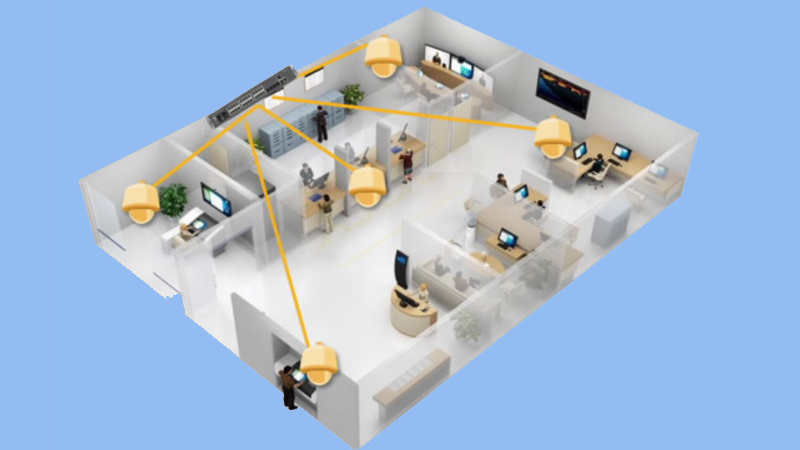POE switch, in simple terms, is a magical device that can simultaneously transmit data and power through Ethernet cables. It is based on standards such as IEEE802.3af/at/bt, and devices such as IP cameras, wireless access points, and VoIP phones can be connected to POE switches without the need for separate power cords. This greatly simplifies wiring work and reduces installation costs. Moreover, it can make device deployment more flexible, for example, in places without power sockets, as long as there is a network cable interface, devices can be installed.

Choose the appropriate POE switch
Choose equipment according to standards: There are different standards for POE switches on the market, and the maximum power of IEEE 802.3af standard is 15.4W, which is suitable for low-power devices such as ordinary IP phones; The maximum power of IEEE 802.3at standard is 30W, which can support high power consumption devices such as network cameras and wireless access points; The IEEE 802.3bt standard is divided into type 3 and type 4, with maximum power of 60W and 100W respectively, and can support high-power devices such as video surveillance and high-power wireless access points. So, we need to choose the appropriate POE switch based on the power requirements of the connected devices.
Consider the number and speed of ports: If there are many devices in your network that need to be connected, you need to choose a POE switch with sufficient ports. At the same time, port speed is also important. Generally speaking, gigabit ports can meet the needs of most devices, but if there are special requirements, such as connecting to servers and other devices with high bandwidth requirements, 10G ports may be needed.
Pay attention to other features, such as QoS (Quality of Service) function, which allows you to prioritize different types of network traffic and ensure the priority transmission of important data; ACL (Access Control List) function can enhance network security and prevent unauthorized access; The SNMP (Simple Network Management Protocol) function facilitates remote management and monitoring of switches. These features can further enhance the performance and security of the network.
Optimize network topology structure
Reasonable wiring: Using high-quality Ethernet cables is key, such as Cat5e or higher grade cables, which can reduce signal attenuation and improve data transmission speed. When wiring, avoid cables that are too long, excessively bent, or interfered with. Try to keep the cables straight and away from strong electrical equipment and wireless signal sources.
Layered design: A layered topology structure consisting of core layer, aggregation layer, and access layer can be adopted. The core layer is responsible for quickly forwarding large amounts of data traffic, the aggregation layer aggregates and processes data, and the access layer directly connects to terminal devices. This structure can reduce network congestion and latency, improve network reliability and scalability.
Implement effective power management
Reasonably allocate power: POE switches have a total power limit, and we need to allocate the power of each port reasonably based on the actual power requirements of the connected devices, ensuring that each device can obtain sufficient power while avoiding switch overload.
Monitoring power status: By utilizing the remote monitoring function of POE switches, the power status of devices can be viewed in real time. Once an abnormality is detected in the power supply of a device, such as low voltage or high current, measures can be taken in a timely manner to avoid affecting the operation of the entire network.
Ensure network security
Access control: Set strict access control policies, such as MAC address binding, port security, etc., allowing only authorized devices to connect to the network to prevent unauthorized devices from accessing.
Data encryption: For sensitive information, it is necessary to use encryption techniques such as WPA2, WPA3, and other encryption protocols to ensure the security of the data during transmission.
Performance monitoring and optimization
Traffic analysis: Regularly conduct network traffic analysis to identify which devices or applications are consuming a large amount of bandwidth and identify network bottlenecks. You can use network traffic monitoring tools such as Wireshark, PRTG, etc. to help you analyze network traffic.
Load balancing: When the load on a port or link is found to be too high, load balancing technology can be used to distribute traffic to other idle ports or links, improving the overall performance of the network.
Troubleshooting and maintenance
Logging: Enabling the logging function of POE switches allows for quick identification of the root cause of network failures, such as device malfunctions, configuration errors, or network attacks, by viewing the logs.
Regular maintenance: Clean and inspect the switch regularly to ensure good heat dissipation and avoid overheating caused by dust accumulation. At the same time, check if the device configuration is correct and if there are any firmware updates needed.
